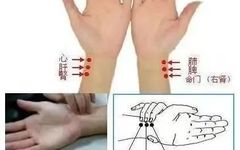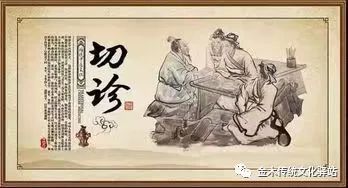
Friends who have experienced Traditional Chinese Medicine (TCM) know that TCM diagnosis emphasizes the “Four Examinations” of observation, listening, inquiry, and palpation.Among them, the most “mysterious” is palpation, where the doctor’s hand rests on our wrist, and the body’s condition seems to be revealed.Why is pulse diagnosis so “magical”?Master TCM physician Li Shimao believes that pulse diagnosis is the soul of the syndrome differentiation and treatment system. In TCM, pulse diagnosis is paramount, accounting for 50% to 90% of the diagnostic weight.▌What can pulse diagnosis “discover”?TCM believes that the pulse condition (the state of the pulse) can reflect the fullness and movement of Qi and blood in corresponding parts of the body.Generally speaking, when Qi and blood are sufficient, the pulse is strong and smooth; when Qi and blood are insufficient, the pulse is weak or soft; Qi stagnation and blood stasis can lead to a choppy pulse.Therefore, through accurate pulse diagnosis, more information can be provided for syndrome differentiation, allowing the physician to administer treatment more accurately.▌What can be felt through pulse diagnosis?In TCM, taking the pulse is not simply pressing and counting the pulse rate!Tip: Finding the right position is crucial!Physicians typically use the index, middle, and ring fingers of the left or right hand to take the pulse.When placing the fingers, first press the middle finger on the inner side of the wrist at the prominent bone, where the arterial pulse can be felt; this is the “Dingguan” point.Then, the index and ring fingers are placed side by side.
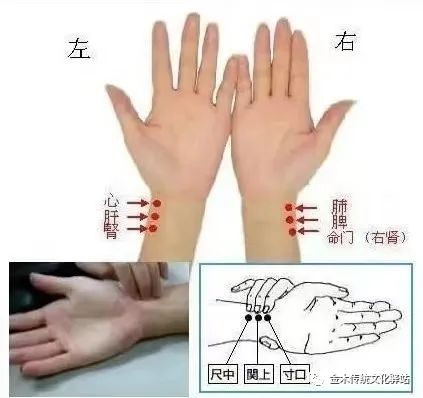
At this time, the index, middle, and ring fingers correspond to the “Cun”, “Guan”, and “Chi” positions.Everyone can try this on a friend; generally speaking, a normal person’s pulse can give a feeling of “fullness and calmness”.During the few minutes of pulse diagnosis, various indicators such as “pulse position”, “strength”, “pulse rate”, and “smoothness” are all under examination.It is these indicators that can comprehensively reflect our health status.
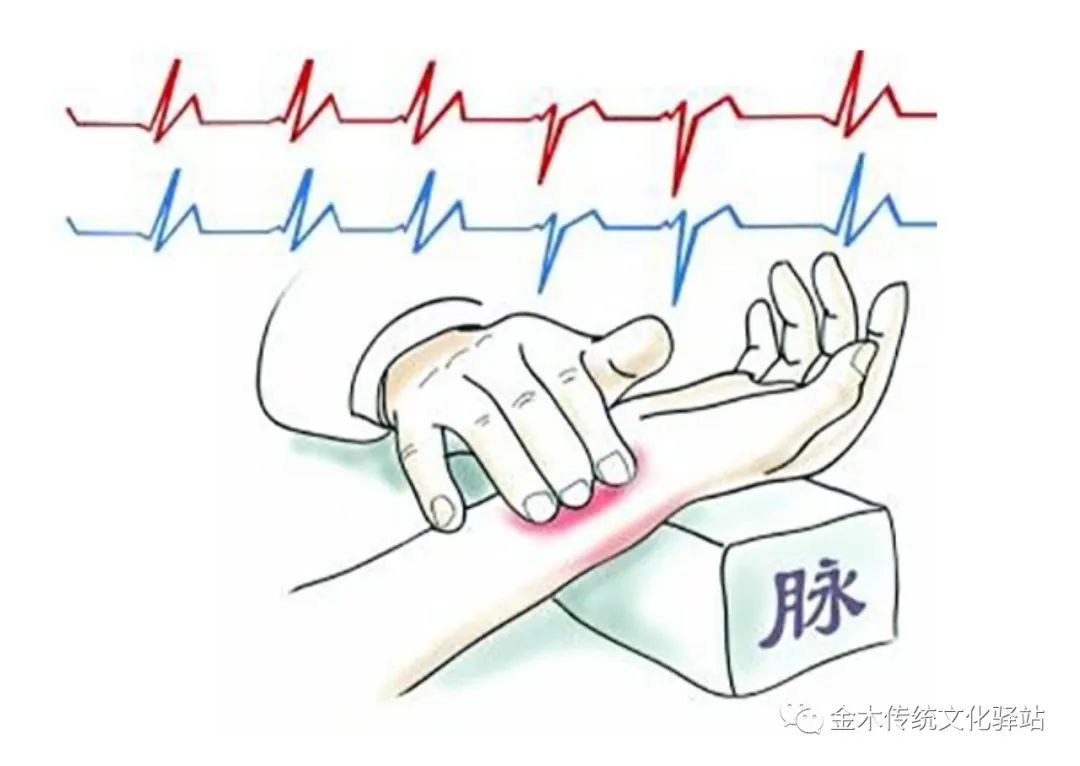
TCM categorizes pulses into twenty to thirty types; here we will briefly introduce a few common pulse types:1. Finger strength determines “floating or sinking”When diagnosing the pulse, the pressure of the fingers varies from light to heavy to find the most prominent pulse point, which can determine the “position” of the pulse, whether it is at the surface or deeper. Floating pulse: Light pressure yields a pulse, heavy pressure yields none; it floats like wood on water. A strong floating pulse indicates wind-heat, while a weak floating pulse suggests blood deficiency.
Floating pulse: Light pressure yields a pulse, heavy pressure yields none; it floats like wood on water. A strong floating pulse indicates wind-heat, while a weak floating pulse suggests blood deficiency. Sinking pulse: Heavy pressure reveals the pulse; light pressure does not respond, like a stone sinking in water. A strong sinking pulse indicates cold pain, while a weak sinking pulse suggests Yang deficiency.2. Counting the pulse rateDuring pulse diagnosis, the physician maintains a calm and even breath, counting the pulse rate with each inhalation and exhalation; normally, it beats about four times, which can roughly estimate the patient’s pulse rate.Specifically, a pulse rate exceeding 90 beats per minute is considered rapid, while fewer than 60 beats per minute is considered slow.Rapid pulse indicates heat, and organ function may be in a hyperactive state; slow pulse indicates cold, and organ function may be suppressed or declining.However, this is not absolute; soldiers or those engaged in heavy physical labor may have a pulse rate exceeding 60 beats per minute.
Sinking pulse: Heavy pressure reveals the pulse; light pressure does not respond, like a stone sinking in water. A strong sinking pulse indicates cold pain, while a weak sinking pulse suggests Yang deficiency.2. Counting the pulse rateDuring pulse diagnosis, the physician maintains a calm and even breath, counting the pulse rate with each inhalation and exhalation; normally, it beats about four times, which can roughly estimate the patient’s pulse rate.Specifically, a pulse rate exceeding 90 beats per minute is considered rapid, while fewer than 60 beats per minute is considered slow.Rapid pulse indicates heat, and organ function may be in a hyperactive state; slow pulse indicates cold, and organ function may be suppressed or declining.However, this is not absolute; soldiers or those engaged in heavy physical labor may have a pulse rate exceeding 60 beats per minute. Slow pulse: A slow pulse beats three times per breath; a very slow pulse should be noted. Slow pulse indicates organ disease or excessive cold; careful analysis is needed between deficiency and excess.
Slow pulse: A slow pulse beats three times per breath; a very slow pulse should be noted. Slow pulse indicates organ disease or excessive cold; careful analysis is needed between deficiency and excess. Rapid pulse: A rapid pulse beats six times per breath; a rapid pulse indicates heat, and the pulse should be differentiated between floating and sinking, as the treatment differs for excess and deficiency.3. Finger technique measures “thickness”By gently pressing the pulse with the fingers, one can perceive the thickness of the pulse.It is important to note that our pulse vessels are like rivers; when the water is sufficient, the river is full; when the water is low, the flow is thin; when the river overflows, it spills.Pulses that are too thin or soft like hair, or too hard like steel wire, are often seen in patients with Yin and blood deficiency.If the pulse is too thick or wide, or even indistinct, it usually indicates that there is excessive evil Qi in the body, most commonly damp evil.Thin pulse: A thin pulse is like a thread; it is extremely fine and does not break. Excessive worry and labor can lead to Qi and blood deficiency, and damp evil stagnation is also common.4. Pressing to assess “deficiency or excess”By placing the hand on the pulse, one can feel the strength of the pulse, which mainly reflects the level of Yang Qi in the body.When Qi is abundant, the pulse is strong; when Qi is deficient, the pulse is weak. However, an overly strong pulse often indicates that there is heat evil in the body stimulating Qi and blood.
Rapid pulse: A rapid pulse beats six times per breath; a rapid pulse indicates heat, and the pulse should be differentiated between floating and sinking, as the treatment differs for excess and deficiency.3. Finger technique measures “thickness”By gently pressing the pulse with the fingers, one can perceive the thickness of the pulse.It is important to note that our pulse vessels are like rivers; when the water is sufficient, the river is full; when the water is low, the flow is thin; when the river overflows, it spills.Pulses that are too thin or soft like hair, or too hard like steel wire, are often seen in patients with Yin and blood deficiency.If the pulse is too thick or wide, or even indistinct, it usually indicates that there is excessive evil Qi in the body, most commonly damp evil.Thin pulse: A thin pulse is like a thread; it is extremely fine and does not break. Excessive worry and labor can lead to Qi and blood deficiency, and damp evil stagnation is also common.4. Pressing to assess “deficiency or excess”By placing the hand on the pulse, one can feel the strength of the pulse, which mainly reflects the level of Yang Qi in the body.When Qi is abundant, the pulse is strong; when Qi is deficient, the pulse is weak. However, an overly strong pulse often indicates that there is heat evil in the body stimulating Qi and blood. Deficient pulse: A deficient pulse is weak and soft, floating and large without root. A deficient pulse with body heat indicates heat stroke; Qi deficiency leads to weakness.
Deficient pulse: A deficient pulse is weak and soft, floating and large without root. A deficient pulse with body heat indicates heat stroke; Qi deficiency leads to weakness. Excess pulse: An excess pulse is large and long, with three positions full and strong. An excess pulse indicates strong evil Qi in new illnesses, while in chronic illnesses, it indicates misfortune.In addition to the above information, physicians will also investigate the state of Qi and blood flow within the pulse to discover pulses such as string-like, slippery, choppy, and soft, to make further judgments about diseases.So, even though it is only a distance of three fingers, the physician can gather a lot of information from it!When combined with observation, inquiry, and listening methods, guided by a holistic view, your personal condition can indeed be “seen through” by the physician!
Excess pulse: An excess pulse is large and long, with three positions full and strong. An excess pulse indicates strong evil Qi in new illnesses, while in chronic illnesses, it indicates misfortune.In addition to the above information, physicians will also investigate the state of Qi and blood flow within the pulse to discover pulses such as string-like, slippery, choppy, and soft, to make further judgments about diseases.So, even though it is only a distance of three fingers, the physician can gather a lot of information from it!When combined with observation, inquiry, and listening methods, guided by a holistic view, your personal condition can indeed be “seen through” by the physician!

Appendix: Other Pulse RhymesSlippery pulseSlippery pulse is difficult to guess, like beads rolling on a plate; it indicates fullness of food and phlegm in the chest, and a woman’s pulse should be regulated during pregnancy.Choppy pulseChoppy pulse is short and difficult to feel, like bamboo scraped; it indicates blood deficiency, dryness, and Qi stagnation.Flooding pulseFlooding pulse is large, like waves; it is strong when it comes and weak when it goes; it indicates strong evil Qi and is difficult to treat.Weak pulseWeak pulse is like silk, pressing it feels like nothing; it indicates severe deficiency and is often seen in chronic diseases.Tight pulseTight pulse is like a rope, indicating pain and cold; it is often seen in food stagnation and phlegm.Slow pulseSlow pulse is even and calm, indicating a balanced state; it may indicate spleen deficiency or dampness.
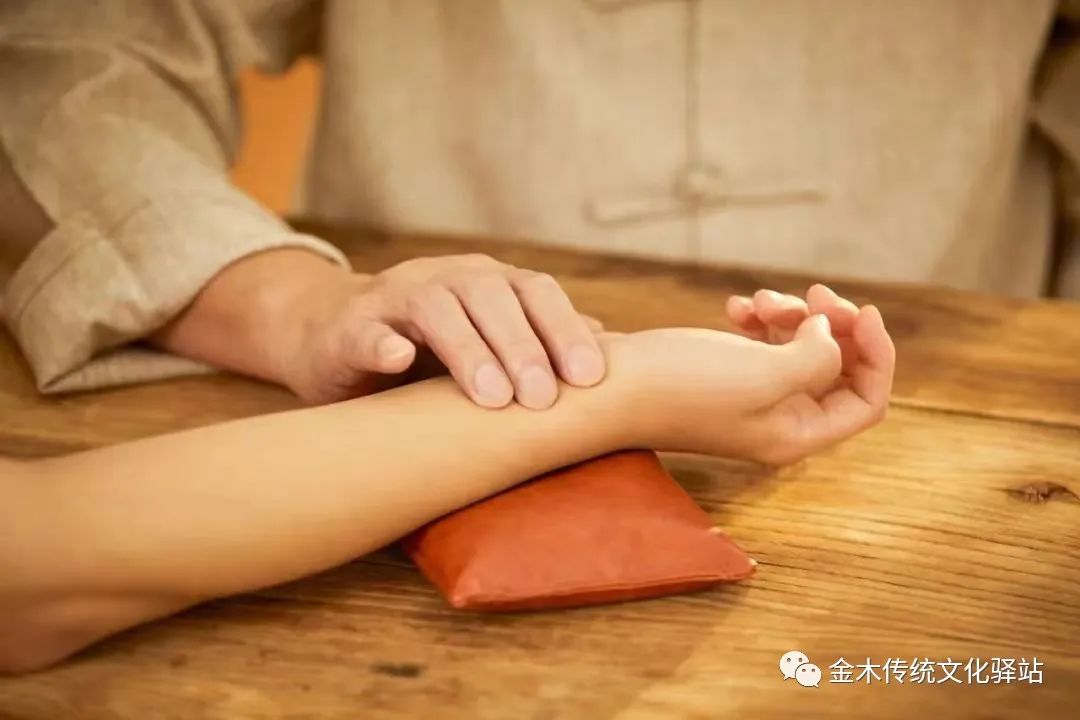
1. Floating pulse
1. Pulse condition: Light pressure yields a pulse, heavy pressure yields none; it floats lightly, like meat floating.
2. Main diseases: Floating indicates Yang, exterior diseases; it is seen in autumn and indicates prolonged illness.
In cases of cold damage, the pulse is floating and tight; in cases of exterior wind-heat, the pulse is floating and strong; in cases of exterior deficiency, the pulse is floating and weak, indicating blood deficiency.
2. Sinking pulse
1. Pulse condition: The pulse is felt deep, like a stone sinking in water; heavy pressure reveals the pulse, while light pressure does not respond.
2. Main diseases: Sinking belongs to Yin, indicating interior diseases; it is seen in winter and should be without issues.
A strong sinking pulse indicates cold stagnation; a weak sinking pulse indicates Yang deficiency; a sinking and slow pulse indicates interior cold, while a sinking and rapid pulse indicates interior heat.
3. Slow pulse
1. Pulse condition: Slow pulse is characterized by a slow rhythm, about three beats per breath.
2. Main diseases: Slow pulse indicates cold and is associated with organ diseases; it suggests that Yang is hidden.
A floating slow pulse indicates exterior deficiency; a sinking slow pulse indicates interior cold; a slow and choppy pulse indicates blood cold; a slow and slippery pulse indicates phlegm accumulation.
4. Rapid pulse
1. Pulse condition: Rapid pulse is characterized by a fast rhythm, about six beats per breath.
2. Main diseases: Rapid pulse indicates heat and excess Yang; it may present as floating or sinking, indicating both exterior and interior conditions.
A strong rapid pulse indicates heat; a fine rapid pulse indicates Yin deficiency; a rapid pulse with phlegm indicates heat phlegm.
5. Flooding pulse
1. Pulse condition: Flooding pulse is large, like waves; it is strong when it comes and weak when it goes.
2. Main diseases: Flooding indicates excess Yang, blood deficiency, and heat; it is often seen in summer and is not unusual.
A flooding and slippery pulse indicates heat phlegm; abdominal fullness indicates flooding and urgency.
6. Weak pulse
1. Pulse condition: Weak pulse feels like nothing when pressed; it is extremely fine and soft.
2. Main diseases: Weak pulse indicates Qi and blood deficiency; it is often seen in cases of Yang deficiency.
7. Thin pulse
1. Pulse condition: Thin pulse is small, like fine silk; it is responsive and does not break.
2. Main diseases: Thin pulse indicates excess and fullness; it is often seen in cases of Qi and blood deficiency.
8. Slippery pulse
1. Pulse condition: Slippery pulse is smooth and round, like beads rolling; it indicates fullness of food and phlegm.
2. Main diseases: Slippery pulse indicates excess Yang; it is often seen in women during pregnancy.
9. Choppy pulse
1. Pulse condition: Choppy pulse is short and difficult to feel; it indicates blood deficiency and Qi stagnation.
2. Main diseases: Choppy pulse indicates blood stasis and Qi stagnation; it is often seen in cases of cold damage.
10. Tight pulse
1. Pulse condition: Tight pulse is like a rope; it indicates pain and cold.
2. Main diseases: Tight pulse indicates cold and pain; it is often seen in cases of food stagnation and phlegm.
11. Slow pulse
1. Pulse condition: Slow pulse is even and calm; it indicates a balanced state.
2. Main diseases: Slow pulse indicates spleen deficiency or dampness.
12. Appendix: Other pulse types and their meanings
Disseminating TCM health knowledge, promoting Chinese traditional culture, sharing health concepts, and conveying care, passing health knowledge and traditional culture to more friends…
People are great because they have dreams; we are different because we have love.
Liu Qingning: 186 9643 6785 or (WeChat ID)
Yang Shunsong: 138 7171 7447 or (WeChat ID)


